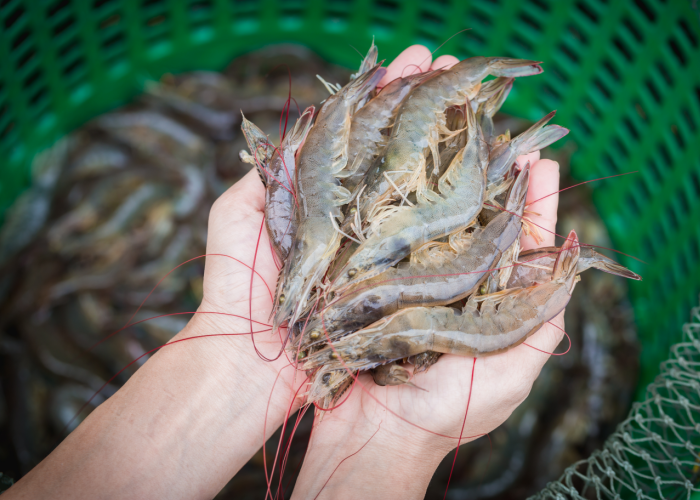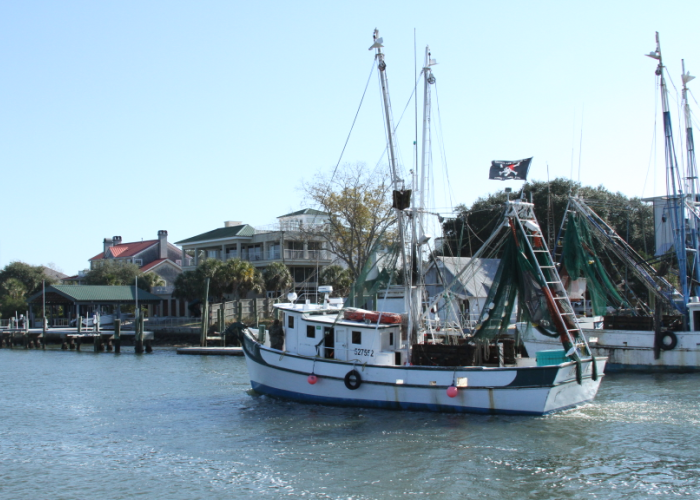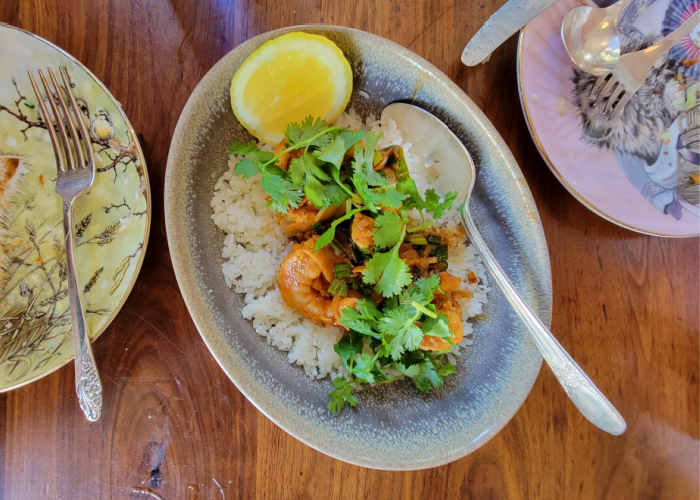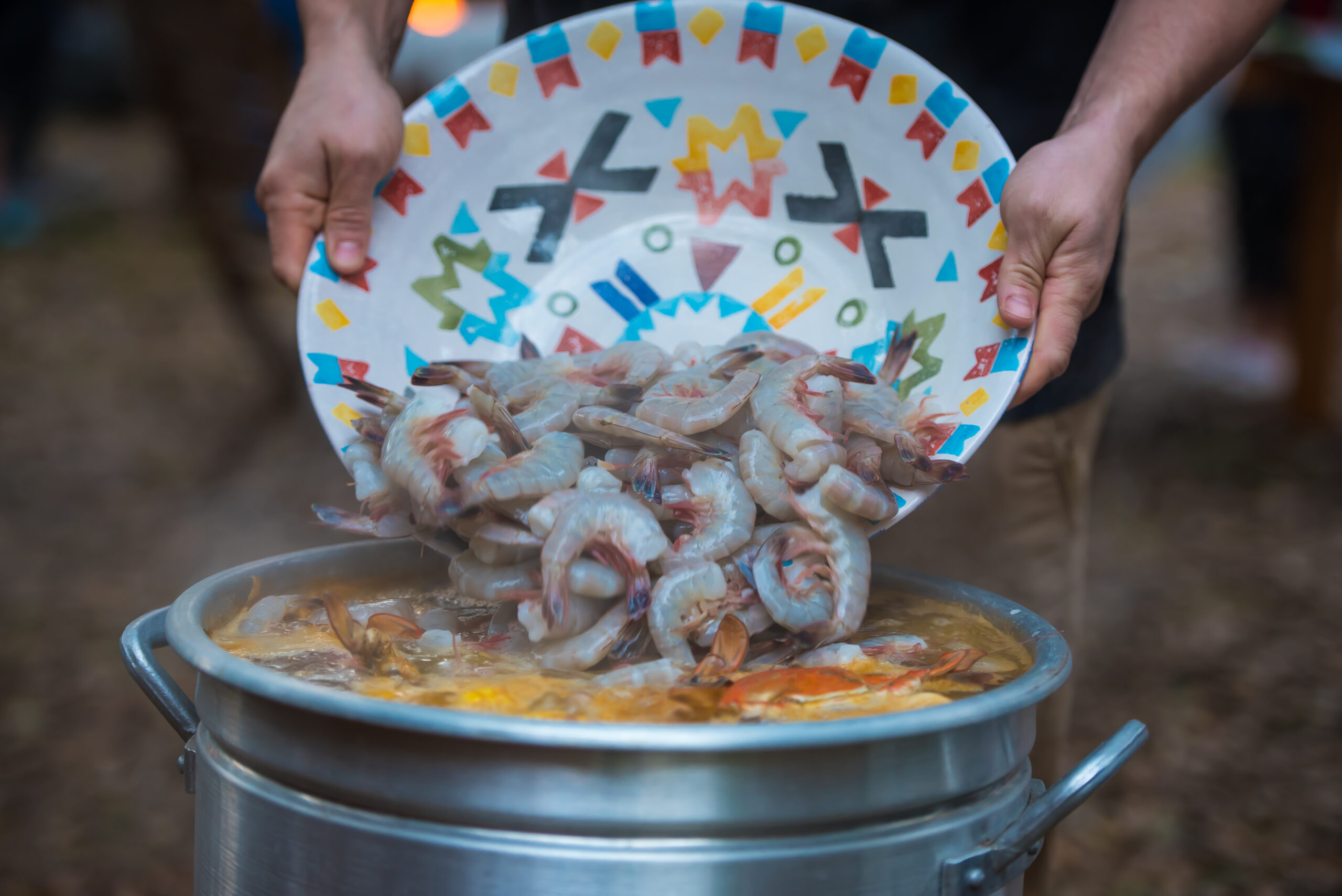Shrimp and grits, seafood stew, Lowcountry boil, shrimp tacos, shrimp cocktail or just plain shrimp skewers…if you eat seafood, you likely have a favorite way to eat shrimp or a family recipe that’s been passed down through generations.
Shrimp is a classic seafood item and is one of the most widely available seafood products in Charleston. With three different species of shrimp inhabiting the South Atlantic region, we have access to fresh, local shrimp year-round. By choosing to cook and eat local shrimp, you’re boosting the local economy, supporting local fishermen and reducing your carbon footprint!
Prawn To Be Wild
So, what is it about these three particular species of shrimp that’s so significant? For starters — they’re local! South Atlantic coastal waters are home to populations of pink, white and brown shrimp, all relatively similar in size, appearance and life histories. Juveniles spend the first portion of their lives in inshore habitats, such as the saltmarsh, and migrate into the ocean after reaching adulthood.
 White shrimp: the most common species in South Carolina
White shrimp: the most common species in South CarolinaShrimp have very short life spans — only about two years — so they reproduce quickly and abundantly! In fisheries terms, this species is considered an “annual crop,” meaning there is a new generation of shrimp to harvest. Although there are numerous ways to fish for this species, fishermen most frequently use the trawling method to commercially catch shrimp.
Trawling involves dragging a specialized net along the ocean floor to catch the buried and bottom-dwelling shrimp. In the South Atlantic region, this method comes with its own set of rules and regulations regarding proper use of bycatch-reduction devices, population assessments and federal permitting for commercial fishermen. Trawl nets are retrofitted with turtle excluder devices (TEDs) to provide threatened and endangered sea turtles an escape route.
 Shrimp trawlers line the docks in Shem Creek
Shrimp trawlers line the docks in Shem CreekIt’s Shr-impractical
Did you know that 87% of shrimp in the United States is imported? That’s impractical and unsustainable, considering our access to shrimp here in the Lowcountry! Choosing shrimp that is harvested locally (rather than imported from overseas) is fresher, travels fewer food miles and is caught by fishermen with decent and dignified working conditions. Plus, you’re putting your dollars back into your community, which is definitely something to shellebrate!
A Shrimple Decision
Fresh, local shrimp is always available in the Lowcountry…sometimes you just have to ask what’s what! A great place to start is with our Good Catch partners who are dedicated to providing sustainable seafood all year long.
Consider the following dishes to try at Good Catch partner restaurants:
- The chili garlic shrimp from Chubby Fish
- A bowl of shrimp & grits from Slightly North of Broad
- The moqueca de peixe (Brazilian fish stew) from The Establishment
 Chili garlic shrimp from Chubby Fish
Chili garlic shrimp from Chubby FishIf you’re more of an at-home chef, stop by Abundant Seafood, Tarvin Seafood or Cherry Point Seafood for the freshest shrimp in town. Did we mention that shrimp sold at these locations typically comes straight from local fishing vessels? Talk about sustainable… they’re truly one in a krillion!
Something to Prawnder
Whether it’s dining out at a local restaurant or crafting your own dish at home, we encourage you to share your experience with us in celebration of National Citizen Science Month! Our Good Catch Seafood Survey is a project in the South Carolina Aquarium Citizen Science app that strives to bring our community together over local and sustainable seafood, just as you might gather your loved ones around the table for dinner.
Download the South Carolina Aquarium Citizen Science app to start sharing your local seafood experiences!
Published April 7, 2023


